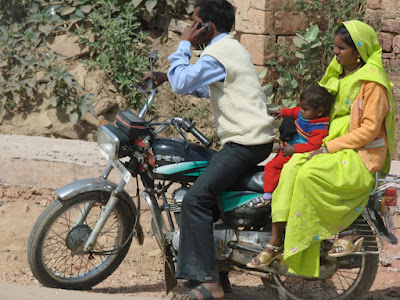
Take 2.5 million US weddings a year, add half a million commitment ceremonies and multiply it by an average of 150 guests at each event, and you end up with overflowing landfills and toxins soaking into the water supply, our skin, and Mother Earth.
While celebrating your love isn’t supposed to be a downer about the death of the planet, weddings tend to be about stuff—single use, chemically bleached dresses, toxic makeup, rolls and rolls of gift wrap, gem-based jewelry, chemically treated, imported flowers, and lots of garbage. This may be why green weddings made #5 in the global nuptials hottest trends list. Trend #1 is announcing your engagement on Facebook— also eco in that it eliminates paper declarations.
While celebrating your love isn’t supposed to be a downer about the death of the planet, weddings tend to be about stuff—single use, chemically bleached dresses, toxic makeup, rolls and rolls of gift wrap, gem-based jewelry, chemically treated, imported flowers, and lots of garbage. This may be why green weddings made #5 in the global nuptials hottest trends list. Trend #1 is announcing your engagement on Facebook— also eco in that it eliminates paper declarations.
Green wedding planner, Kate Harrison explains, “If every wedding this year used a disposable aisle runner and the runners were laid end –to-end, they would circle the globe twice! Similarly, the amount of paper used to make invitations could cover the island of Manhattan.”
Throwing an earth-friendly ceremony doesn’t mean you have to sacrifice style or freak-out your friends with lectures about recycling. You can gently increase people’s awareness with your show of love for one another and the planet with earth and money-saving practices at a celebration that doesn’t poison the planet. Take these simple ideas:
- Clue guests in early to your eco-approach with a page in your program or website highlighting some of the green choices you made and mention choices they can make to green their travel and gifts.
Example about a wedding menu, “Our menu will offer mostly vegetarian choices. Raising cattle uses much more energy than growing vegetables. And, according to the US Environmental Protection Agency (EPA), chemical and animal waste runoff from factory farms is responsible for more than 173,000 miles of polluted rivers and streams. Runoff from farmlands is one of the greatest threats to water quality today. Agricultural activities that cause pollution include confined animal facilities, plowing, pesticide spraying, irrigation, fertilizing and harvesting. - Invitations, place and note cards not only generate tons of trash—the production of paper creates air and water pollution. Try plantable paper and envelopes implanted with wildflower seeds, you buy the paper from a company like Botanical Paperworks and print your own invites. Or order from Plantable Seed Paper which makes paper for you with your own choice of seeds—from trees to herbs or flowers.
Engagement Rings and Jewelry. Gold mining is one of the dirtiest businesses on the planet. Production of just one ring creates 20 tons of mine waste and the battle over diamonds has left over 50,000 dead, half a million refugees, and a thousand amputees. In addition to the human cost, mining creates erosion and flooding. Make a big difference with these choices:
- Buy a previously owned ring from eBay or a reputable consignment shop like Saddlerock Barn in Sedona. Owner, Mary Ann Johnson has these tips for easy eco, “The trend in jewelry sales is for estate and vintage wedding sets. Our customers buy old rings and have the stones reset. A new diamond ring costs about $4,600. With a vintage ring you know you are not contributing to pollution or violence, and you spend around $2,000.”
- Sumiche Jewelry Co. is the only company in the U.S. using Certified Green Gold and Platinum. Their handcrafted jewelry is created from Certified Fair Trade/Eco-Gold and Platinum. All diamonds are certified Conflict Free.
Choose vendors who make an effort to go green. Go with local or organic food catered at a green certified venues like Smog Shoppe—LA’s first completely green event space—100% solar powered. Even music can go green, take Bamboo Beats in Seattle, WA, these DJs use only MP3 files—no CDs—plus they drive to and from gigs in a hybrid, and only print in-house on recycled materials with an Energy Star® rated printer. Other eco-tactics:
- Save money and trash. Photographers can be expensive and if every wedding in the US had 10 disposable cameras, that puts 25 million cameras a year in landfills. Who needs more plastic when there are good alternatives like renting fully insured, digital cameras? Let your guests take quality photos and lighten up the landfill load. Camera Renter ships digital cameras to you and when you return the cameras the photos post to a website so you can share pictures with your guests.
- Save money, book offseason—Sedona makes a good choice with close to 300 days of sunshine a year your wedding can be outside almost anytime except July and August.
- Smaller footprint, bigger rooms, lower bill at check out. Choose lodging for guests or your honeymoon at eco-conscious vacation rental homes like those at EcoLuxury Lodging or a green B&B.
- Choose recycled dresses instead of buying new. Wedding and bridesmaid gowns can use up to 16 yards of fabrics made from petroleum products, bleached with toxic chemicals, and shipped from China. The average cost of a new wedding dress is $1,300, a previously worn gown averages just $200 and no new resources were used to create it.
- Donate gowns after the wedding to The Cinderella Project or The Glass Slipper Project.
- Slow down conspicuous consumption. Let guests know you’re comfortable with reused, re-gifted items on your wish list.
This blog is for bottom-up dispensers of cool who enjoy healthy living. We feel that "the small, the slow, the local, and the personal" will build the new economy. Your comments will help enrich this information for all of us. Please share your tips and experience.


